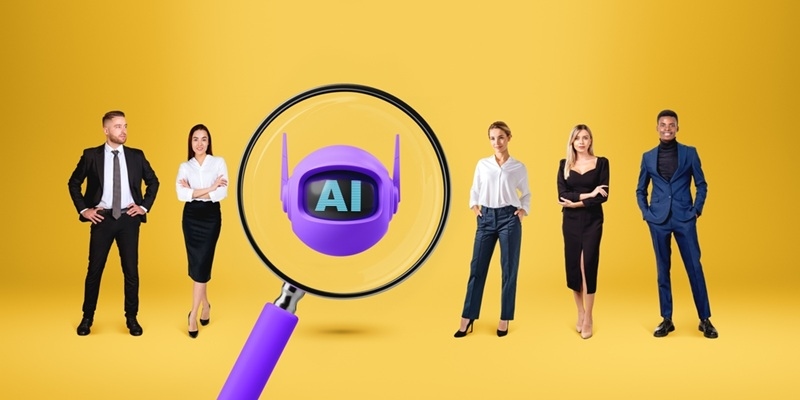AI Hiring Process 2025: Transforming Recruiting Strategies

Hiring in 2025 doesn’t look anything like it did a few years ago. Companies no longer spend weeks shuffling through resumes or chasing interview schedules. Instead, the hiring process has become lean, predictive, and remarkably fast. The change isn’t luck, it’s the result of a new generation of AI recruiting software, the rise of the best AI interview tools, and the steady evolution of HR tech tools 2025 that now sit at the core of how businesses build teams.
What makes this shift so important is that it’s not just about automation. It’s about building a hiring process that actually works, for recruiters, managers, and candidates.
What AI Recruiting Software Really Means in 2025
The term AI recruiting software used to mean little more than resume parsing. That’s outdated. In 2025, it means platforms that cover the full hiring cycle:
- Sourcing becomes smarter- Rediscovering old candidates, tracking passive candidates, or finding matches for existing employees with internal job opportunities.
- Screening that matters: Automated triage considers the strongest skill-to-role matches rather than just rankings of resumes.
- Candidate engagement: Messaging via email, chat, and mobile apps keeps applicants informed and engaged so they are not lost.
- Workflow automation: Every step from initial screening to onboarding is tracked, without a single recruiter having to engage in follow-up to keep the process going.
- Bias monitoring: Inbuilt checks identify behavioral patterns that lead to undeserved discrimination against potentially qualified candidates.
Combining the most advanced AI in recruitment software is now stepping beyond the scope of just an ATS, instead serving as the very foundation of modern-day hiring. The typical HR leaders are pretty much drowned in data, so manual analysis ended up becoming boxed in from all possible sides.
Related Reads: Top HR Trends: Key Workforce & HR Tech Shifts
The New Face of HR Tech Tools 2025
HR tech tools 2025 is the phrase that summarizes where the industry stands: Now, companies want integration, speed, and clarity, rather than scattered systems.
Here are the qualities that determine the new wave of HR tech tools 2025:
- End-to-end ownership: Tools that manage complete workflows, from sourcing to offboarding.
- Real-time analytics: Live dashboards that warn of problems before they can become serious bottlenecks.
- Seamless integration: Sync effortlessly with HRIS, payroll, performance systems, and learning platforms.
- Candidate-first design: Systems that keep applicants engaged, NOT processed.
- Privacy and compliance: With laws tightening worldwide, a tool that cannot show compliance will not survive.
From managing ten different standalone tools, companies have begun focusing on a handful of platforms that do most of the heavy lifting. That is the defining shift in HR tech tools 2025.
Best AI Interview Tools to Watch
Interviews remain the make-or-break stage in hiring, and the best AI interview tools are reshaping how companies run this step. These tools aren’t about replacing recruiters but rather granting them better ways to assess, schedule, and engage.
Here are the main categories in which the best AI-powered interview tools allow the greatest impact to be made:
- Scheduling automation: AI assistants like Paradox's Olivia can manage time zones, send reminders, and reschedule in seconds. Candidates won’t be left waiting for days for a slot.
- Video and one-way interviews: Candidates respond at their convenience, while recruiters can assess responses quickly. Some tools actually analyze tone or language, but transparency and fairness are legitimate concerns here.
- Structured interview support: AI prompts work as a checklist for the interviewers, maintaining consistency and ensuring that all candidates are evaluated against the same criteria.
- Predictive Matching: Programs such as Eightfold AI analyze company data and correlate it with candidate data to predict how a candidate might perform, or grow, within the company.
What makes the best AI interview tools in 2025 is the fact they are not stand-alone applications. They connect directly to AI recruiting software and larger HR tech tools 2025, making the whole hiring pipeline more reliable and less manual.
Explore More: Modern Human Resources: Tech-Driven Solutions for Success
How the AI Hiring Process Plays Out in 2025

To see how this all comes together, here’s what a modern AI-powered hiring process looks like:
- Role definition: Recruiters use data from AI recruiting software to identify skills and market demand.
- Candidate sourcing: Tools surface past applicants, internal talent, and external prospects.
- Screening and scoring: Automated analyses rank applicants on skills and fit.
- Scheduling and communications: The best AI interview tools keep momentum without needing manual coordination.
- Interviews: Structured, consistent, fair, and complete.
- Decision-making: Predictive models support recruiters while human judgment makes the final call.
- Offer and onboarding: Automated workflows set up new hires as soon as they accept.
- Retention and growth: Continuous monitoring by HR tech tools 2025 ensures continuous support and matching to internal opportunities.
This is no longer theory: This technology is already providing a stark competitive advantage in halving time-to-hire among leading companies across industries while enhancing candidate experience.
Benefits and Challenges
Benefits
- Speed: The faster sourcing, screening, and scheduling have saved countless hours for recruiters.
- Consistency: Best AI interview tools reduce interviewer bias and standardize evaluations.
- Insight: With AI recruiting software, HR leaders know not just who to hire but why those hires succeed.
- Candidate experience: Communication is faster, clearer, and less frustrating.
Challenges
- Bias risk: Without monitoring, algorithms can perpetuate bias.
- Transparency: Candidates and regulators want to know how decisions are arrived at.
- Integration headaches: Old HR systems don't always connect cleanly.
- Cost: Not everyone can afford the most costly platforms.
Those companies that succeed with the AI hiring process are those that incorporate technology with human judgment.
Best Practices for Using AI in Hiring
- Set measurable goals: Define whether you want faster time-to-hire, better diversity metrics, or improved retention.
- Choose integrated tools: Invest in HR tech tools 2025 that can adopt full workflows or connect cleanly with your systems.
- Pilot and then scale: Pilot for specific roles before rolling out at the company.
- Humans control it: Let AI provide the insight, not the final call.
- Audit: Keep track of bias in practices, candidate experiences, and compliance.
Following these standards will ensure that AI recruiting software and top AI interview tools will actually improve outcomes---instead of creating them.
The Road Ahead
The AI hiring process in 2025 has already changed the way companies find and secure talent. But this is only the beginning. Expect to see:
- Stricter regulations around fairness and explainability.
- Deeper use of generative AI in crafting job descriptions and communications.
- Virtual and augmented reality assessments for skill-heavy roles.
- More focus on internal mobility as retention becomes a bigger priority.
As HR tech tools 2025 evolve further, the hiring process will continue shifting from being reactive to being proactive, helping companies anticipate needs before they even arise.
Must Read: TOP READ: Explore HR Leaders' Strategies for Challenges
Conclusion
The AI hiring process in 2025 is about more than speed. It’s about building a system that integrates AI recruiting software, the best AI interview tools, and the broader HR tech tools 2025 into a seamless pipeline. Companies that embrace this approach don’t just hire faster — they hire smarter, fairer, and with long-term performance in mind.
The future of hiring is already here. The only question is whether organizations are ready to use it well.
This content was created by AI

